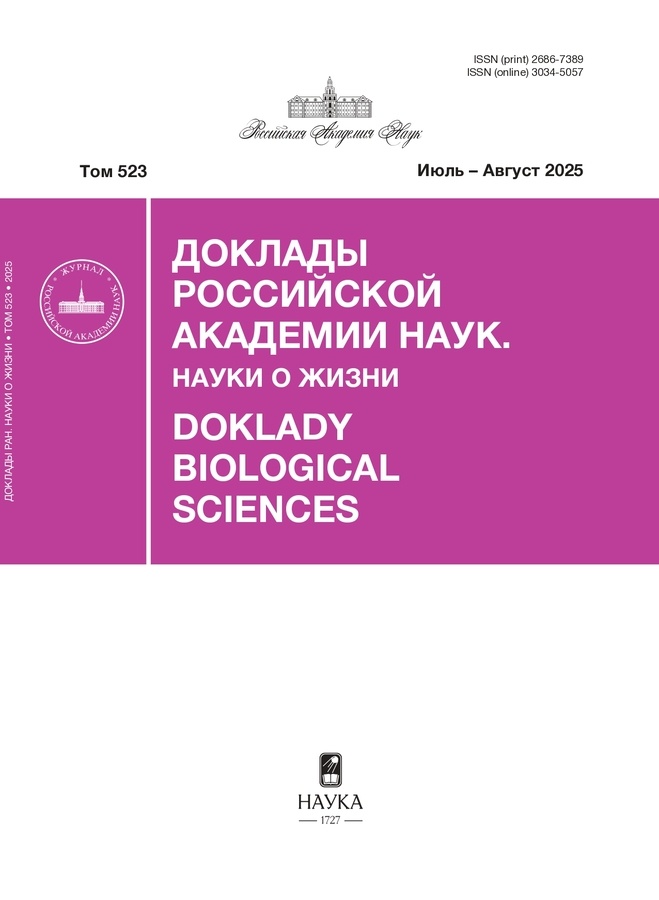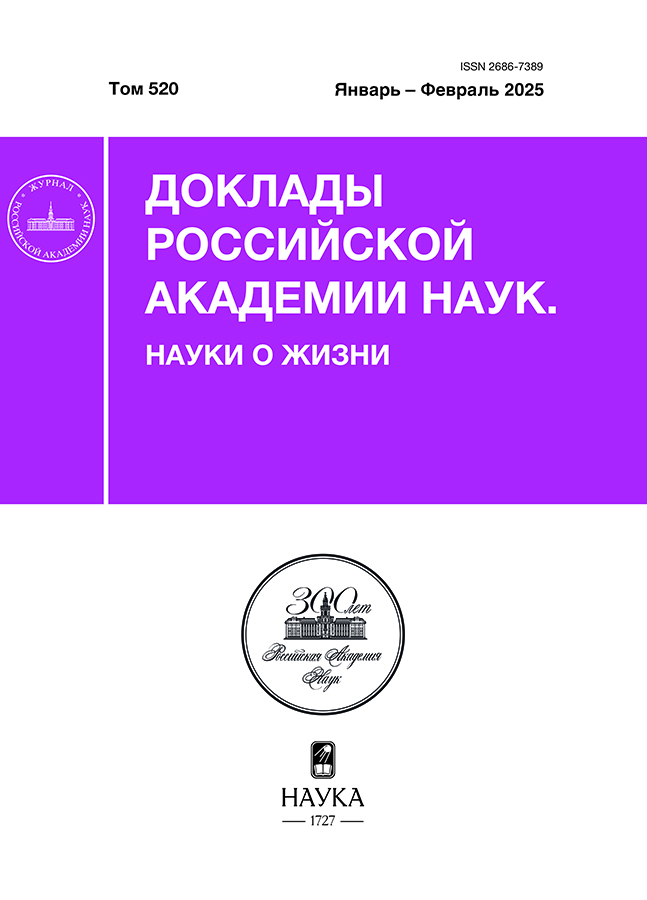Размеры ооцитов позволяют предполагать существование личинок у глубоководных кишечнодышащих Torquaratoridae (Hemichordata, Enteropneusta)
- Авторы: Ежова О.В.1, Лукиных А.И.1, Малахов В.В.1
-
Учреждения:
- Московский государственный университет имени М.В. Ломоносова
- Выпуск: Том 520, № 1 (2025)
- Страницы: 10-13
- Раздел: Статьи
- URL: https://rjpbr.com/2686-7389/article/view/682015
- DOI: https://doi.org/10.31857/S2686738925010028
- EDN: https://elibrary.ru/tdonos
- ID: 682015
Цитировать
Полный текст
Аннотация
Известно, что тип развития морских беспозвоночных связан с размерами яйцеклеток. Приведены данные по максимальным размерам ооцитов глубоководных кишечнодышащих семейства Torquaratoridae. Высказано предположение, что среди Torquaratoridae есть виды с прямым развитием, виды с лецитотрофными личинками и виды с планктотрофными личинками. Загадочные гигантские личинки Planctosphaera pelagica могут быть планктотрофными личинками Torquaratoridae.
Полный текст
Об авторах
О. В. Ежова
Московский государственный университет имени М.В. Ломоносова
Автор, ответственный за переписку.
Email: olga_ejova@mail.ru
Россия, Москва
А. И. Лукиных
Московский государственный университет имени М.В. Ломоносова
Email: olga_ejova@mail.ru
Россия, Москва
В. В. Малахов
Московский государственный университет имени М.В. Ломоносова
Email: olga_ejova@mail.ru
академик РАН
Россия, МоскваСписок литературы
- Holland N.D., Clague D.A., Gordon D.P., et al. ‘Lophenteropneust’ hypothesis refuted by collection and photos of new deep-sea hemichordates // Nature. 2005. Vol. 434. No. 7031. P. 374–376.
- Holland N.D., Jones W.J., Ellena J., et al. A new deep-sea species of epibenthic acorn worm (Hemichordata, Enteropneusta) // Zoosystema. 2009. Vol. 31. No. 2. P. 333–346.
- Holland N.D., Kuhnz L.A., Osborn K.J. Morphology of a new deep-sea acorn worm (class Enteropneusta, phylum Hemichordata): A part-time demersal drifter with externalized ovaries // J. Morphol. 2012. Vol. 273. No. 7. P. 661–671.
- Priede I.G., Osborn K.J., Gebruk A.V., et al. Observations on torquaratorid acorn worms (Hemichordata, Enteropneusta) from the North Atlantic with descriptions of a new genus and three new species // Invert. Biol. 2012. Vol. 131. No. 3. P. 244–257.
- Osborn K.J., Gebruk A.V., Rogacheva A., et al. An externally brooding acorn worm (Hemichordata, Enteropneusta, Torquaratoridae) from the Russian Arctic // Biol. Bull. 2013. Vol. 225. No. 2. P. 113–123.
- Jabr N., Archambault P., Cameron C.B. Biogeography and adaptations of torquaratorid acorn worms (Hemichordata: Enteropneusta) including two new species from the Canadian Arctic // Can. J. Zool. 2018. Vol. 96. No. 11. P. 221–1229.
- Holland N.D., Hiley A.S., Rouse G.W. A new species of deep-sea torquaratorid enteropneust (Hemichordata): A sequential hermaphrodite with exceptionally wide lips // Invert. Biol. 2022. Vol. 141. e12379.
- Rybakova E., Galkin S., Gebruk A., et al. Vertical distribution of megafauna on the Bering Sea slope based on ROV survey // PeerJ. 2020. Vol. 8. e8628.
- Thorson G. Reproductive and larval ecology of marine bottom invertebrates // Biol. Rev. 1950. Vol. 25. P. 1–45.
- Vance R.R. On reproductive strategies in marine benthic invertebrates // Amer. Nat. 1973. Vol. 107. No. 955. P. 339–352.
- Marshall D.J., Keough M.J. The evolutionary ecology of offspring size in marine invertebrates // Adv. Mar. Biol. 2008. Vol. 53. P. 1–60.
- Urata M., Yamaguchi M. The development of the enteropneust hemichordate Balanoglossus misakiensis Kuwano // Zool. Sci. 2004. Vol. 21. P. 533–540.
- Urata M., Iwasaki S., Ohtsuka S., et al. Development of the swimming acorn worm Glandiceps hacksi: similarity to holothuroids // Evol. Dev. 2014. Vol. 16. P. 149–154.
- Lin C.Y., Tung C.H., Yu J.K., et al. Reproductive periodicity, spawning induction, and larval metamorphosis of the hemichordate acorn worm Ptychodera flava // J. Exp. Zool. B. Mol. Dev. Evol. 2016. Vol. 326. P. 47–60.
- Gonzalez P., Jiang J.Z., Lowe C.J. The development and metamorphosis of the indirect developing acorn worm Schizocardium californicum (Enteropneusta: Spengelidae) // Front. Zool. 2018. Vol. 15. 26.
- Davis B.M. The early life history of Dolichoglossus pusillus Ritter // Univ. Calif. Publs. Zool. 1908. Vol. 4. P. 187–226.
- Burdon-Jones C. Development and biology of the larva of Saccoglossus horsti (Enteropneusta) // Phil. Trans. Roy. Soc. Ser. B. 1952. Vol. 236. P. 553–590.
- Kaul-Strehlow S., Thomas S. A detailed description of the development of the hemichordate Saccoglossus kowalevskii using SEM, TEM, Histology and 3D-reconstructions // Front. Zool. 2013. Vol. 10. 53.
- Pawson D.L., Gage J.D., Belyaev G.M., et al. The deep sea synaptid Protankyra brychia (Echinodermata: Holothuroidea) and its nearsurface dwelling planktotrophic larva, Auricularia nudibranchiata // Sarsia. 2003. Vol. 88. No 3. P. 159–174.
- Spengel J.W. Planctosphaera pelagica // Rep. Sci. Res.’Michael Sars’ North Atlantic Deep Sea Expedition. 1932. Vol. 5. P. 1–28.
Дополнительные файлы












